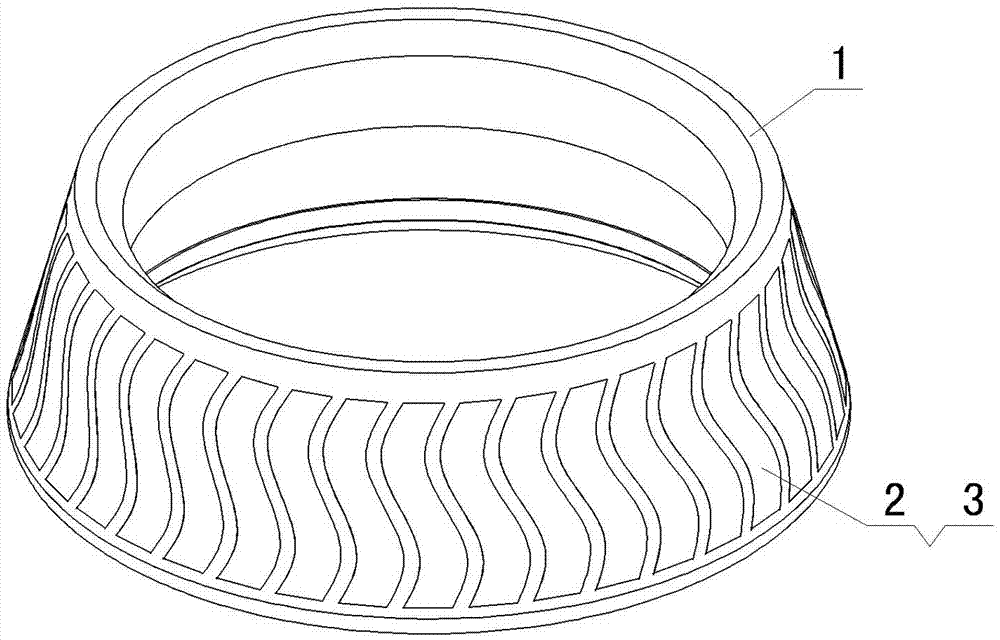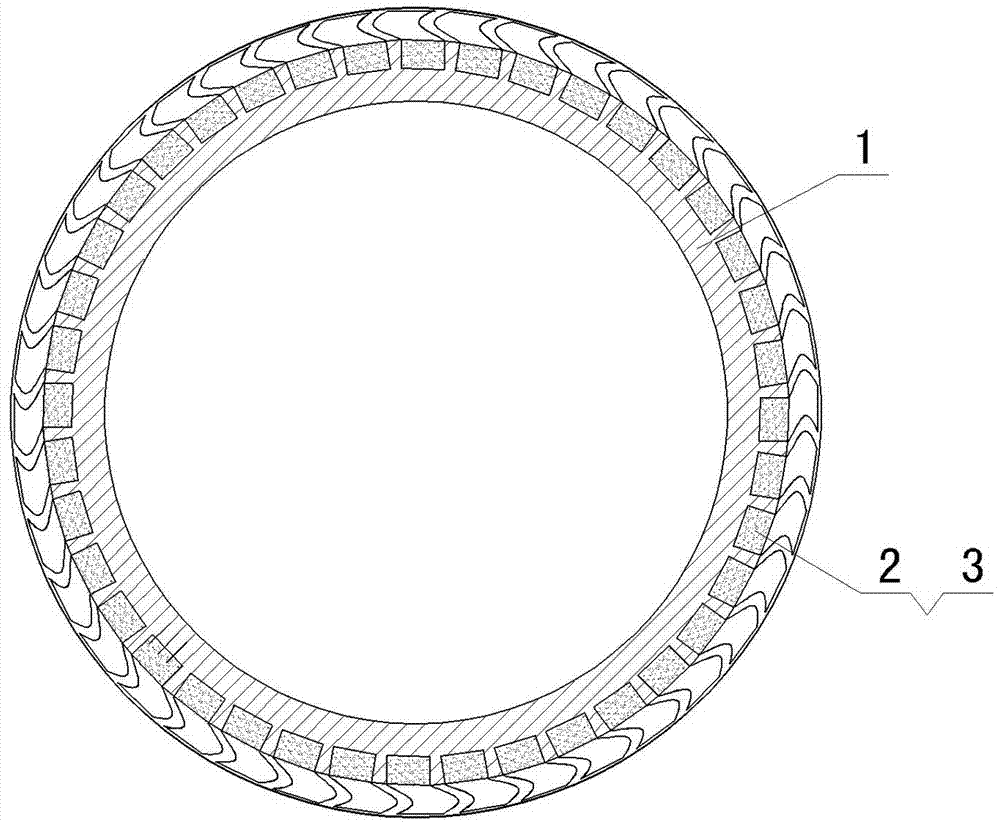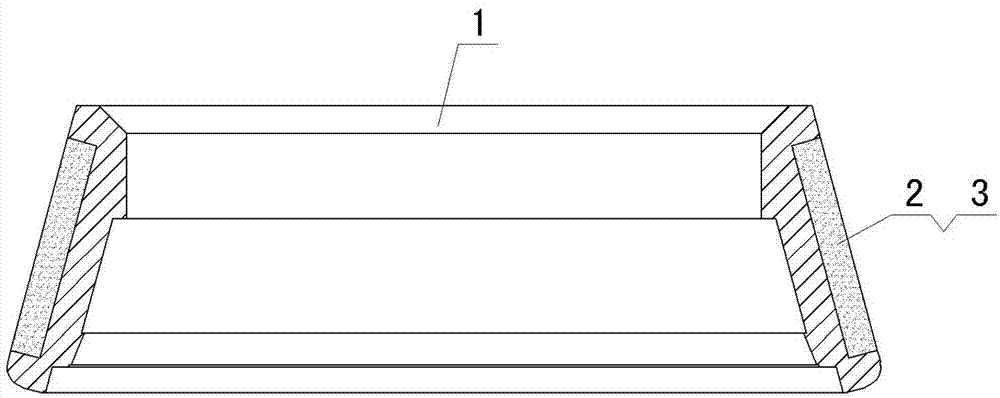Composite material grinding roller and manufacturing method thereof
A technology of composite materials and manufacturing methods, which is applied in the direction of grain processing, etc., can solve the problems of fast wear, high brittleness of wear-resistant materials, limited adhesive force, etc., and achieve the effects of improving service life, avoiding displacement, and not easy to peel off
- Summary
- Abstract
- Description
- Claims
- Application Information
AI Technical Summary
Problems solved by technology
Method used
Image
Examples
Embodiment 1
[0046] First of all, according to the wear surface of the conical grinding roller (about 0.5 tons), the embedded wavy ceramic reinforcement is designed;
[0047] Then, mix ceramic particles with a diameter of 0.1 to 3 mm with a binder, fill them into a mold, and solidify to obtain a wave-shaped ceramic reinforcement 3 with a multi-scale pore configuration inside;
[0048] Then, a number of wave-shaped ceramic reinforcements 3 are closely arranged on the working surface of the grinding roller casting cavity, and the iron alloy is cast for compounding;
[0049] Finally, after cooling, the sand is cleaned and polished to obtain a conical composite material grinding roller, such as Figure 1-Figure 3 shown.
Embodiment 2
[0051] First of all, according to the wear surface of the tire-type grinding roller (about 4 tons), the embedded wavy ceramic reinforcement is designed;
[0052] Then, mix ceramic particles with a diameter of 2 to 6 mm with a binder, fill them into a mold, and solidify to obtain a wave-shaped ceramic reinforcement 3 with a multi-scale pore configuration inside;
[0053] Then, put the corrugated ceramic reinforcement 3 into a cavity with a size close to it, and cast high-chromium cast iron to obtain a corrugated composite 2, such as Figure 4 and Figure 5 shown;
[0054] Then, a number of wave-shaped composite bodies 2 are closely arranged on the working surface of the grinding roller casting cavity, and alloy steel is cast for secondary compounding;
[0055] Finally, after cooling, the sand is cleaned and polished to obtain tire-type composite material grinding rollers, such as Figure 6 and Figure 7 shown.
PUM
| Property | Measurement | Unit |
|---|---|---|
| diameter | aaaaa | aaaaa |
| diameter | aaaaa | aaaaa |
Abstract
Description
Claims
Application Information
 Login to View More
Login to View More - R&D
- Intellectual Property
- Life Sciences
- Materials
- Tech Scout
- Unparalleled Data Quality
- Higher Quality Content
- 60% Fewer Hallucinations
Browse by: Latest US Patents, China's latest patents, Technical Efficacy Thesaurus, Application Domain, Technology Topic, Popular Technical Reports.
© 2025 PatSnap. All rights reserved.Legal|Privacy policy|Modern Slavery Act Transparency Statement|Sitemap|About US| Contact US: help@patsnap.com



